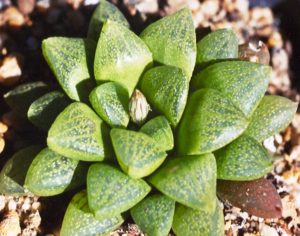More light on the Haworthia pygmaea/retusa/turgida species mystery.
While editing some old pictures I was just stunned that I have so understated the case that retusa, mirabilis, pygmaea, mutica, turgida and emelyae are really one species. The photographic evidence of the plants alone is unbelievable. What I do think has gone under the radar is evidence that I got from the flowers where the flowers of mirabilis, mutica, floribunda are shown to be inseparable.
Warwick Bayer: Do the flowers as a characteristic often fly below the radar as one may struggle to see flowers from different populations together? And one may so often be in the field and not see flowers at all.
Bruce Bayer: Yes, they do mostly because they are seasonal and often these places are not so accessible that it is practical to revisit. The other problem was of recording anything the so-similar flowers might be able to say. Dried they are useless. What I ended up doing was digital images of floret profile, side view, and face. … Very illuminating :)
2019.5.3 – Between the Gouritz Bridge and Herbertsdale. I do not anymore think it is a mystery in itself. The mystery to me is that a rational explanation is neither wanted nor sought.
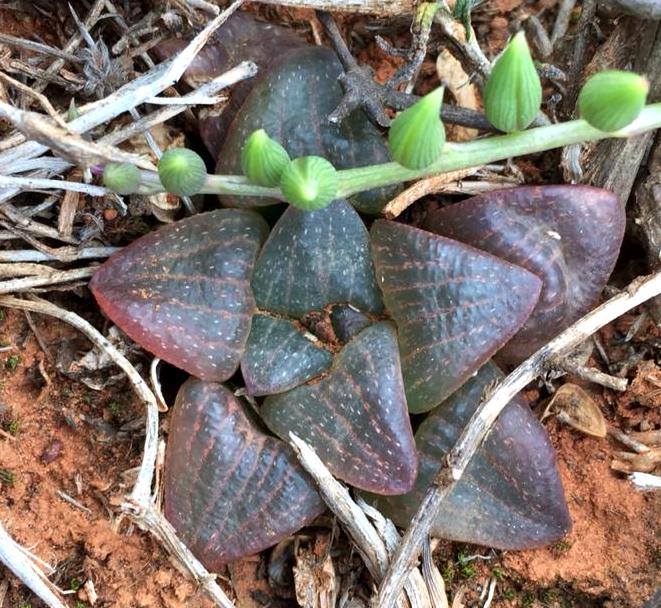
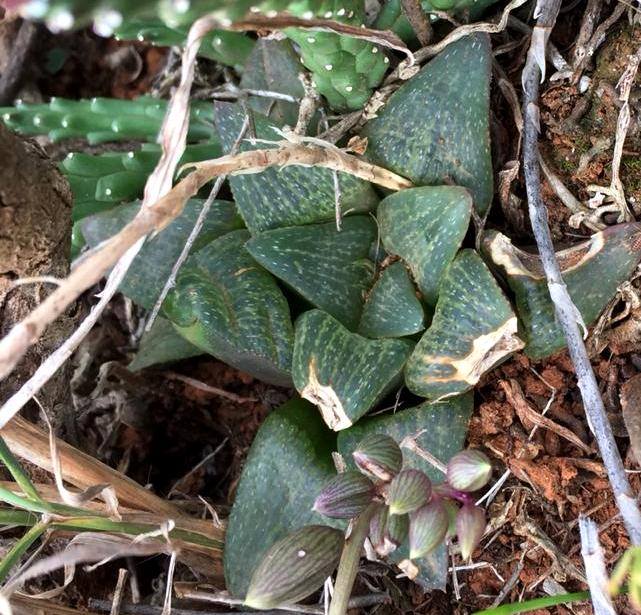

Here is a map to give a general idea of the locations.
1. Greyton/Genadenal area
2. Robertson Karoo
3. Bredasdorp, Napier
4. Breede River with Infanta, Malgas, Potberg at sea end
5. Tradouw with Buffeljags between this and 4
6. Slang Rivier to SE Heidelberg
7. Duiwenhoks River from Hedelberg to sea
8. Goukou River Riversdale to sea, Kruis and Wegwysers rivers to NE Riversdale
9. Gouritz River with Albertinia to east and Wydersriver to north Albertinia
10. Mossel Bay, Great Brak, Herbertsdale area
11. Montagu area N. Langeberg Range
12. N Garcia Pass in Little Karoo
12. Aasvoelkrans in Little Karoo
2019.5.6 – I thought I would post this to show how confusing classification, plant names and classification can become. I found a folder with these pictures – turgida, pygmaea, retusa, mutica, mirabilis, floribunda, and emelyae. Ridiculous as it seems, they can be linked by a geographically arranged sets of variants that morph them into a single set. In the process my mind just boggled at collectors who just cannot seem to grasp the problem or a solution. Around Mossel Bay we have two species H. turgida and H. pygmaea but in the west around Greyton to Napier, we have three H. retusa, H, mutica and H. mirabilis. In between there are a host of combinations while a fourth species intervenes viz. H. floribunda. Difficult enough, but across the Langeberg there is a fifth, H. emelyae. All one? H. floribunda has its own complications. No single picture is remotely adequate to illustrate any one of them. It is this kind of complexity that pervades the plant world and the botanical names we need to communicate about them.
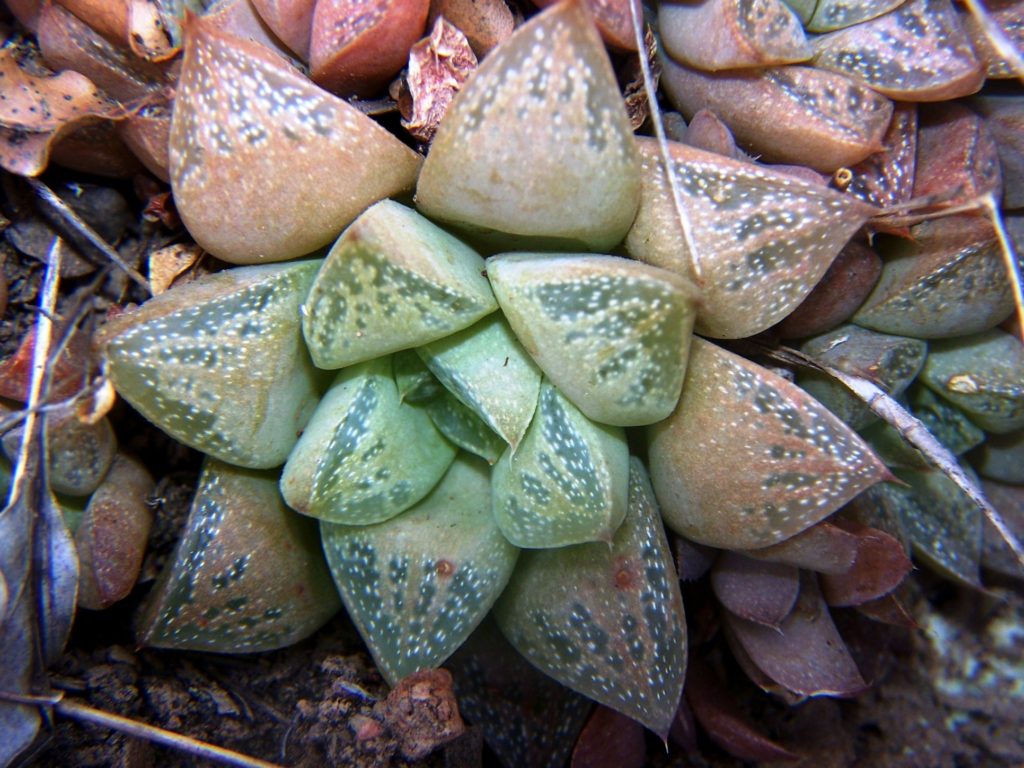
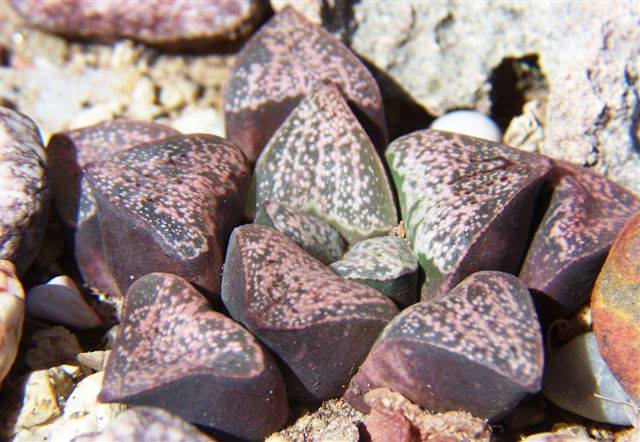
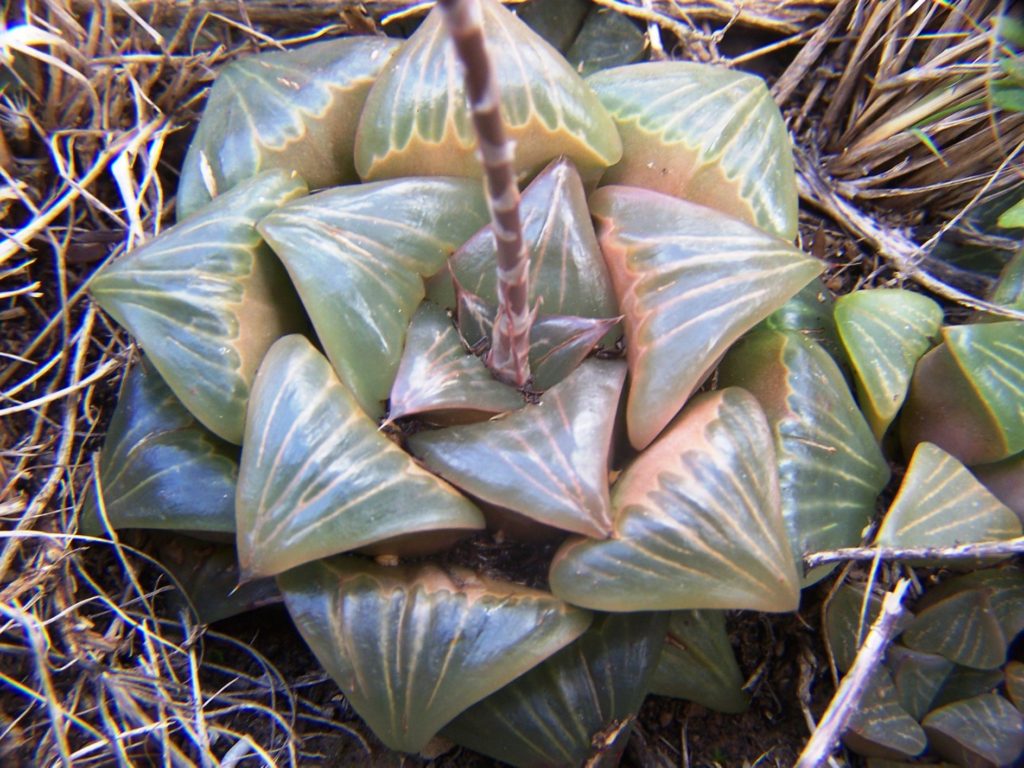

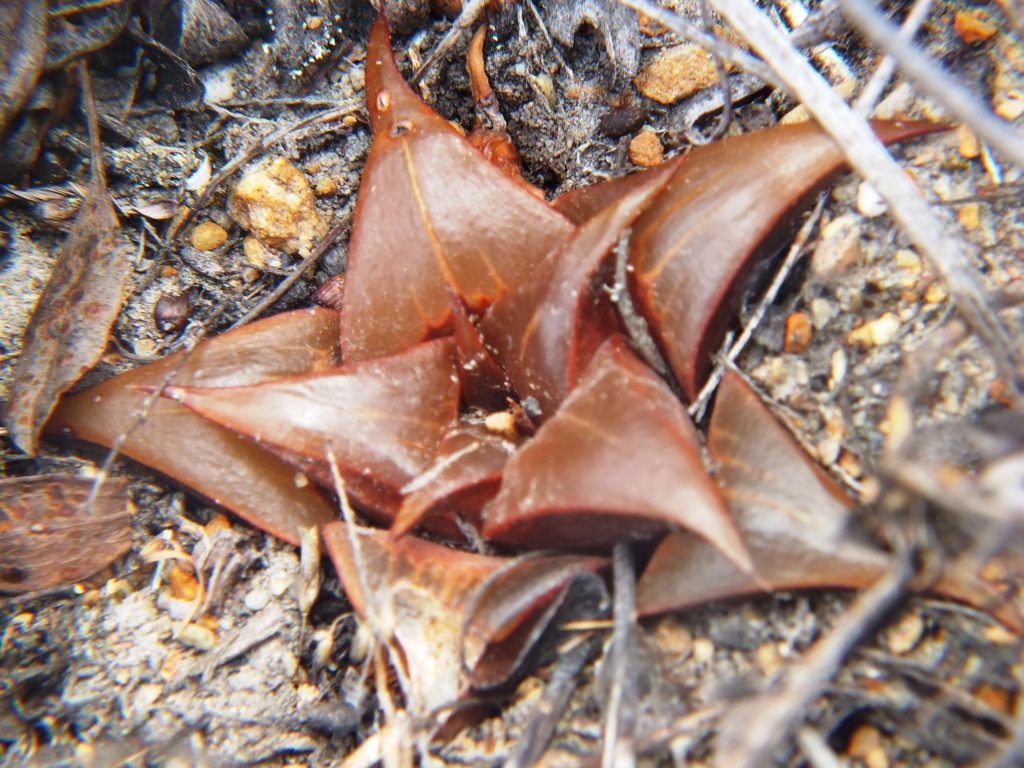
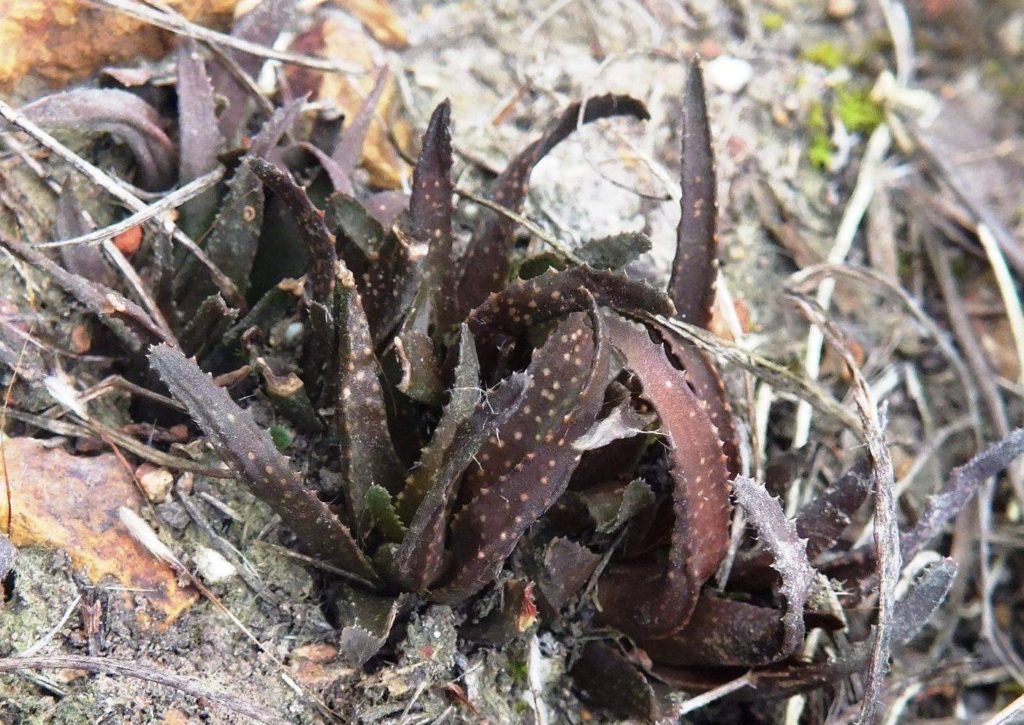

Steven Molteno: I’ve recently got very interested in the relations between floribunda and mirabilis, because of this gradient being so often syntopic with T. marginata. The N.Bredasdorp-Rooivlei Haworthia interest me in particular. Some really remind me of floribunda. More and more I feel the need to draw out some multidimensional lattice in order to try model or understand these relations. A bit like the map you once drew of them Bruce.
Bruce Bayer: Yes Steven – I think this is the real challenge and I find it difficult to believe that there are not botanists who are working at this – confounded by the majority who are stuck in a dead-end. I think I arrived at a classification solution by visualising such a lattice as a reality. What should be done now is to take the end classification and generate layers according to it. This would be a great test of the classification.
Here are more giant retusa from the same locality – what is true is that populations have characteristics as much as the “species” do. The Haworthia species mystery continues …
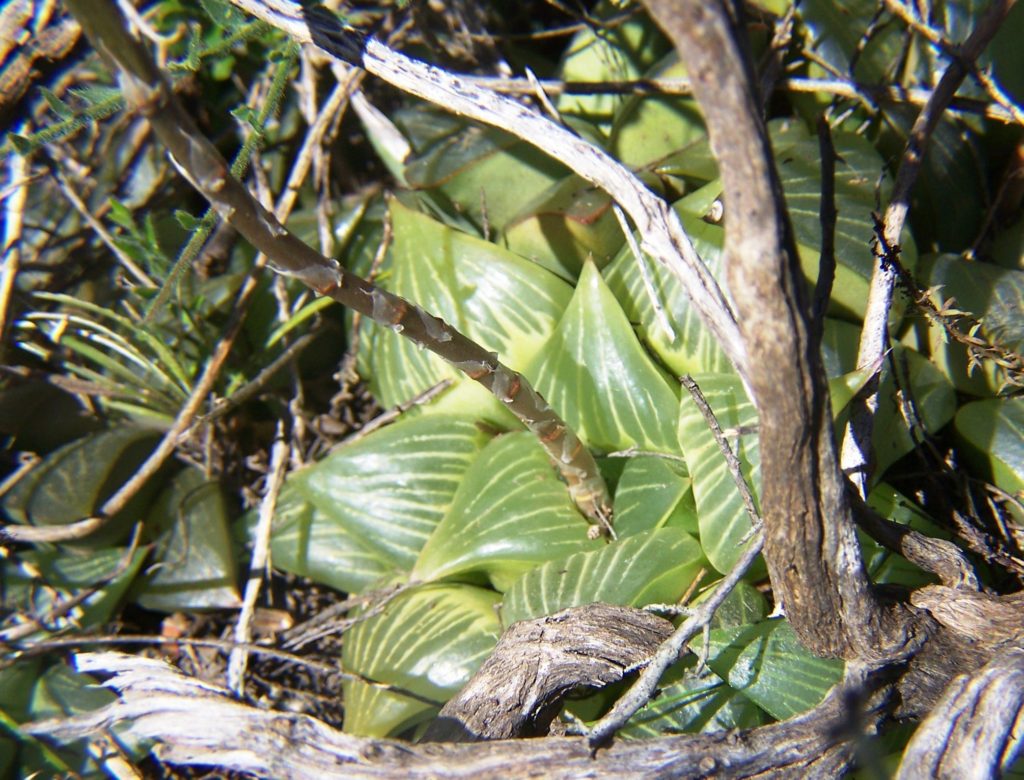


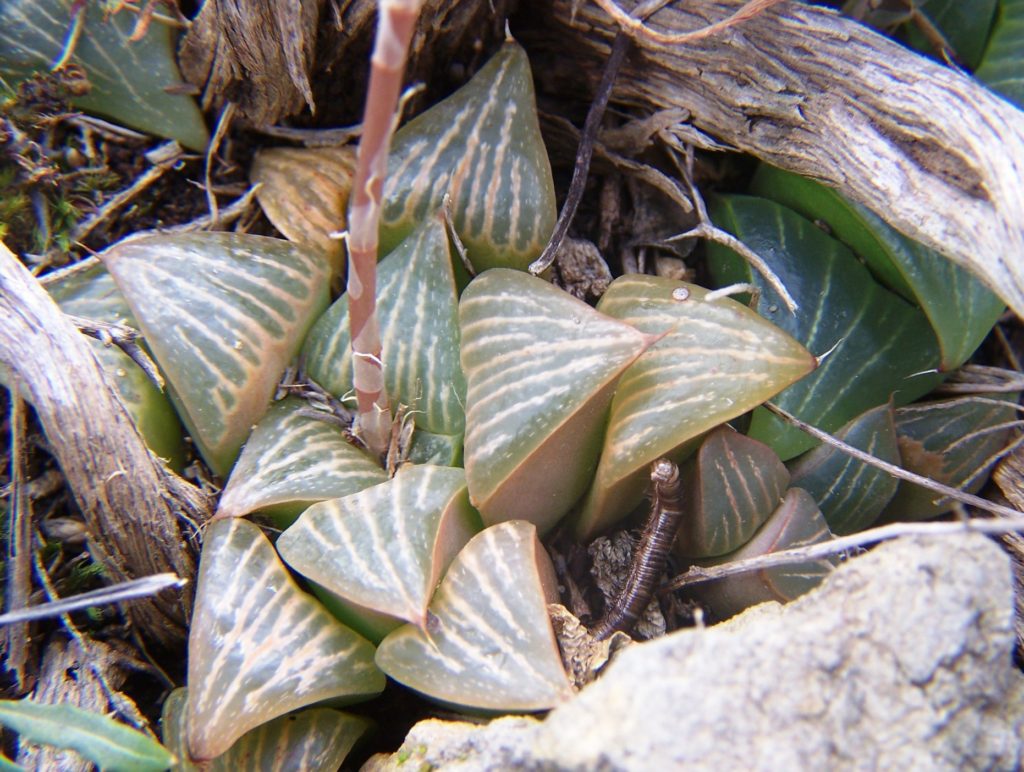

2019.5.8 – I only have two pictures of cultivated variants for a place north-east of Albertinia near the Gouritz River = “turgida”. They add to the next three that are the pictures sent to me from a locality a few miles further east right on the Gouritz. These pictures support this fact. If you interpret them in the light of populations to the east you might say the third and fifth pictures are H. pygmaea and the 4th “turgida”. But if you do so from the west you arrive at H. mirabilis and H.”turgida”. In fact, they are not quite either. Why? They come from a common gene pool that is one species! Proliferating all these personal and acquaintance names does nothing but bury the issue under a pile of garbage. ♦

